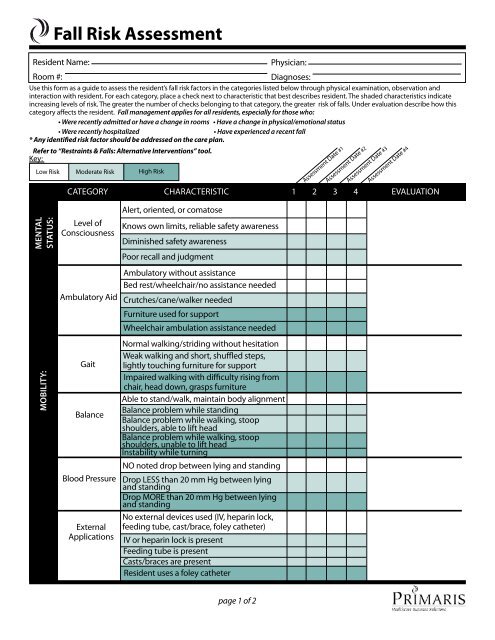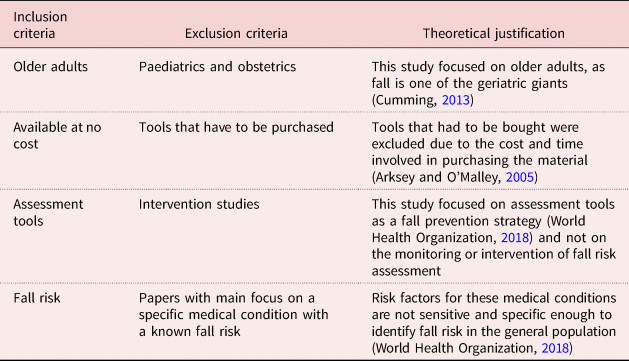Dementia Fall Risk - Truths
8 Easy Facts About Dementia Fall Risk Explained
Table of ContentsTop Guidelines Of Dementia Fall RiskThe Best Strategy To Use For Dementia Fall RiskHow Dementia Fall Risk can Save You Time, Stress, and Money.The Only Guide for Dementia Fall Risk
A loss threat assessment checks to see just how most likely it is that you will certainly drop. The assessment normally consists of: This includes a series of inquiries regarding your overall health and if you've had previous falls or issues with balance, standing, and/or strolling.STEADI includes testing, analyzing, and intervention. Treatments are referrals that might minimize your risk of falling. STEADI includes three steps: you for your risk of dropping for your risk aspects that can be boosted to attempt to avoid falls (for example, balance issues, impaired vision) to decrease your danger of falling by utilizing reliable methods (for instance, providing education and resources), you may be asked a number of inquiries consisting of: Have you fallen in the previous year? Do you feel unstable when standing or walking? Are you stressed over dropping?, your copyright will check your strength, equilibrium, and stride, utilizing the complying with loss analysis devices: This test checks your stride.
If it takes you 12 seconds or even more, it might indicate you are at greater risk for a loss. This test checks toughness and balance.
Move one foot halfway ahead, so the instep is touching the big toe of your various other foot. Relocate one foot fully in front of the various other, so the toes are touching the heel of your various other foot.
Some Known Details About Dementia Fall Risk
A lot of drops take place as a result of numerous adding factors; for that reason, taking care of the risk of dropping begins with recognizing the elements that add to drop danger - Dementia Fall Risk. Several of the most relevant danger aspects consist of: Background of prior fallsChronic clinical conditionsAcute illnessImpaired stride and balance, lower extremity weaknessCognitive impairmentChanges in visionCertain high-risk medicines and polypharmacyEnvironmental variables can also enhance the risk for falls, consisting of: Insufficient lightingUneven or harmed flooringWet or unsafe floorsMissing or damaged hand rails and get barsDamaged or improperly equipped devices, such as beds, mobility devices, or walkersImproper use of assistive devicesInadequate supervision of the individuals residing in the NF, including those that exhibit hostile behaviorsA effective autumn threat monitoring program calls for a comprehensive professional assessment, with input from all members of the interdisciplinary group

The care plan ought to also consist of interventions that are system-based, such as those that advertise a safe atmosphere (proper illumination, handrails, get bars, etc). The efficiency of the interventions need to be assessed periodically, and the care plan modified as necessary to show adjustments in the fall threat analysis. Carrying out a fall threat administration system using evidence-based best method can reduce the occurrence of drops in the click over here now NF, while restricting the capacity for fall-related injuries.
Some Ideas on Dementia Fall Risk You Need To Know
The AGS/BGS guideline suggests screening all grownups aged 65 years and older for fall risk yearly. This screening includes asking patients whether they have dropped 2 or more times in the past year or looked for clinical attention for a loss, or, if they have not dropped, whether they really feel unstable when walking.
People who have actually dropped as soon as without injury needs to have their equilibrium and gait assessed; those with stride or equilibrium problems ought to obtain additional assessment. A background of 1 loss without injury and without stride or balance troubles does not call for more evaluation past continued annual fall danger screening. Dementia Fall Risk. A loss risk analysis is required as part of the Welcome to Medicare examination

Dementia Fall Risk for Dummies
Documenting a drops history is just one of the high quality indicators for loss avoidance and management. A critical part of threat analysis is a medicine testimonial. A number of classes of medicines increase loss threat (Table 2). Psychoactive medicines specifically are independent predictors of falls. These drugs often tend to be sedating, change the sensorium, and harm equilibrium and gait.
Postural hypotension can frequently be relieved by reducing the dosage of blood pressurelowering medicines and/or stopping medications that have orthostatic hypotension as a side impact. Usage of above-the-knee support pipe and resting with the head of the bed raised might likewise decrease postural decreases in high blood pressure. The suggested aspects of a fall-focused physical evaluation are shown in Box 1.

A pull time more than or equivalent to 12 secs suggests high fall risk. The 30-Second Chair Stand examination assesses lower extremity toughness and balance. Being incapable to stand from a chair of knee elevation without making use of one's arms suggests increased fall threat. The 4-Stage Equilibrium examination evaluates static balance by having the patient stand in 4 positions, each progressively a lot more tough.